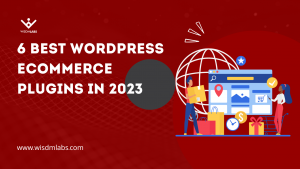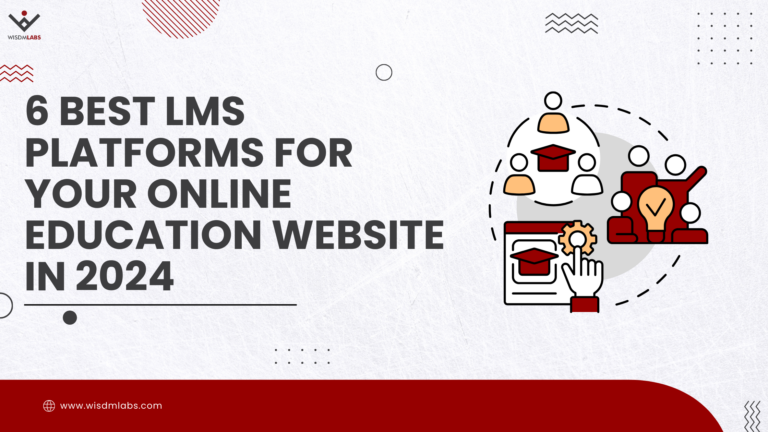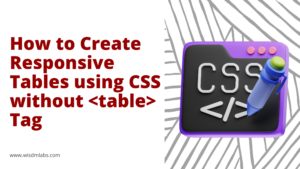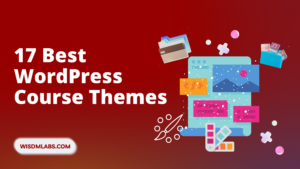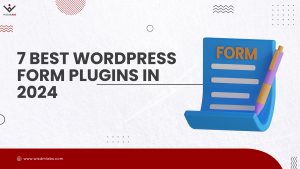
Vacation rentals have added an entire, new dimension to accommodations for a trip. Customized vacation experiences satisfy the visitors’ craving to enjoy off-beat activities and are hence immensely popular. Given that this niche market is increasing exponentially, a lot of home-stay networking websites (think Airbnb), have sprung into action.
All of these incorporate a mediocre design, grainy photos, or cluttered interfaces, where the visitor cannot make head or tail of the services offered. It doesn’t do to forget that renter expectations have moved on from a simple listing with a generic index of the amenities available and the ‘fun experiences’ to be enjoyed. Vacation rental websites now need to go above and beyond the conventional approach to website design and offer that extra touch to gain purchase in the visitor’s head.
Prior to understanding the essential features of an elegant vacation rental website, let us briefly see the things that you should NOT incorporate into the rental bookings website; you know, for comparison’s sake.
What should you NOT have on your vacation rental website?
- A messy user interface
- Complicated booking system
- Generic images that are not optimized for the web
- Lack of communication details and personal information
- Non-responsive design, i.e. not compatible across mobiles and other screen sizes
- Tons of distracting promotional advertisements
- Lack of certifications and statutory compliances
- No user reviews
- Difficult navigation at the Administrator end
- No Localization
Need we say more? Based on the avoid list mentioned above, you might have started to generate a fairly clear idea of what an ideal vacation rental website ought to look like. So, without further ado, lets us discuss the what’s, why’s and wherefore’s of the 15 essential features of a vacation booking website.
The 15 Essential Features of a Vacation Rental Website
#1 A Sleek Interface
The foremost requirement of any website is clean, uncluttered front-end user interface. Although this might sound cliché, first impressions do last. Comprehensive statistical analyses suggest that users do not bother exploring websites that have flashy advertisements, too many options, and spammy links that keep circulating within the website. Keeping it minimalistic often works the best, with direct links to related pages that can be accessed easily based on user interest. Simplicity is key.
However, that does not mean rendering your Homepage bare. Too little can be as harmful as too much. One has to strike the right balance here by prioritizing the salient features of the website and displaying them using appropriate layouts and color schemes. The user needs to find enough related information on the Homepage to be induced to move further. With respect to navigation, it is a good idea to have hierarchical links above the main content which makes moving back and forth between pages extremely easy.
#2 A Robust Booking System
The booking system is essentially the lifeblood of the vacation rental website, so it follows that it needs to be robust and able to process bookings easily. There are three core aspects one should look for while selecting the bookings software; intuitive availability, date, location, and service provider selection options, hassle-free payment gateways, and a strong framework that supports multiple, simultaneous bookings.
The other peripherals include social integrations, management of the rental owners’ availability, and email notification integration to send auto-responders to customers.
#3 Organization of Listings
Building on the messy interface premise, it is necessary to keep finding related listings on the website simple. Providing comprehensive search options based on relevant categories and tags that help the front-end user find what they are looking for in the least possible time goes a long way towards increasing conversion rates.
At the rental owner’s end too, putting up a listing should be as straightforward as you can make it. Airbnb gives their listers the freedom to edit their listing Pages all the way through before they are finally published. Different user roles can be created for this express purpose that encourages listers to present their home-stays more creatively.
#4 Recommendations
Users appreciate websites that go out of the way to offer recommendations about the local activities that can be done, or regional attractions to visit, while on the vacation. This can be something as simple as a campfire on the beach to something as exclusive as a customized tour of the local historical monument. It helps to have listings that have regional expertise and are willing to organize activities leveraging the knowledge.
Recommendations can be a great way of helping travelers plan their itineraries and enjoy off-the-track experiences. These create indelible memories that encourage users to return to your website for future trips!
#5 Featured Displays
Big, beautiful, and captivating images are generally the first things your visitors get hooked on to. It is necessary to present your listings in the best light possible, literally. Adding a picture gallery, actual photos clicked by previous visitors, and clear and distinctive images have a definite impact on the user.
However, it is necessary to ensure that the image has been optimized for the web interface. High-resolution images that take too long to load are extremely off-putting and account for the highest bounce rates. Again, balance is key. You can also go for stock photos at times, but it is more advisable to use your own snaps for the most part.
#6 Reviews and Feedback
Nothing speaks ‘authentic’ more than a genuine review. Incorporating customer feedback is a must for vacation rental websites. Travelers today are aware of hospitality scams and hence constantly alert for the same. At the Admin end, it is your responsibility to check the validity of the rental owner’s claims and provide genuine ratings accordingly. Reviews and ratings establish the authenticity of the place and the advertised activities, thus alleviating the first-time user’s apprehension.
#7 A Clear CTA
Among all the other elements of the website, the Call to Action is one of the most vital ones. Especially for a vacation rental website, the CTA should be strategically placed so that neither does it blend with the background, nor overshadow the core website design. Ambiguous calls to action should be avoided at any cost. One can also add limited availability messages to encourage quicker bookings.
#8 Easily Accessible Contact Forms
Although we strive to make the website as comprehensible as possible, users are bound to have questions for the rental owners and the website administrators. Keeping this in mind, the website needs to have easily accessible contact forms where users can fill in their queries. A simple contact form, with the user’s name, email address, and a text box for the query should suffice; too long contact forms can be frustrating for the user.
Getting repeated inquiries about the same issue? Pre-empt user queries and add a FAQ page that addresses them.
#9 Markers of Authenticity
In a world of fake websites and fraudulent service providers, legal certificates and security compliances mean a great deal. Add your site registration credentials, SSL certification, and secure gateways icons on the site, especially on the Contact us and Payment Gateway pages, which establish your legitimacy and offer credibility to your listings.
#10 Straightforward Admin Control
After considering so many features that increase ease-of-use at the front-end, it is time to talk about the back-end features that a vacation rental website ought to have. The very first is an uncomplicated Dashboard and Admin panel that lets you keep track of listings and bookings alike. This is also from where you control site analytics, rental commissions, website modifications, site upgrades, and maintenance. A clear Admin interface can be of immense help here as it lets you navigate easily through the site.
#11 The All-important ‘About Us’ Page
Quite a lot of vacation rental websites overlook the importance of an ‘About Us’ page, with some not even designing one for their websites. However, the absence of an ‘About Us’ page can be extremely damaging to your credibility as anonymous websites are naturally suspect.
Creating an introductory page that speaks about you and the website, with your contact information including email address and phone number reinforces the user’s understanding that this is something that you seriously work for.
It does not have to be very long; even a brief idea of how the company works is sufficient.
#12 Adding a Personal Touch
Apart from the comprehensive listings, you offer on the website, consider adding personalized articles or a blog relating various travel experiences on the site. Various CMS platforms like WordPress and Drupal are already configured for adding blog posts, so starting a blog shouldn’t be an issue. In addition, you can even post recommendation articles that advise people about the different activities and experiences they can participate in at any given destination.
#13 Offers, Discounts, Coupons, and more
Everybody loves a discount. Redeemable coupons? Excellent! Even apart from the monetary perks, discounts and offers can be a way to let customers know that you appreciate their trust and encourage brand loyalty. Great service paired with special offers can be a great combination to spur recurring visitors.
#14 Making the Website Responsive
Customers book vacation rentals from all over the globe, through all sorts of devices. Desktops, laptops, mobiles, iPads, you name it. Given this high rate of multi-device bookings, vacation rental website owners can no longer afford to stay oblivious. Financially speaking, it is a better idea to build a responsive website from the very beginning, as opposed to spending a ton of bucks on it later. The bottom line remains; responsive websites are the need of the hour.
#15 Payment Gateway Integration
Earlier we talked about the SSL encryption certificates that need to be used to certify the authenticity of payment gateways. However, it is necessary to understand that additional security compliances might be in order, depending on the regions you cater to. Integrating regional and international payment gateways is a good idea. Additionally, you need to provide localized versions of your site so that payments can be tendered online using the local currency, thereby facilitating quicker transactions.
This is a brief list of the features that every vacation rental website ought to incorporate. A clean, well-designed website that lets the user find exactly what he is looking for within minutes, is like a breath of fresh air.
What do you think? Let us know your recommendations for any other features that a vacation rental website requires in the comments section below!



